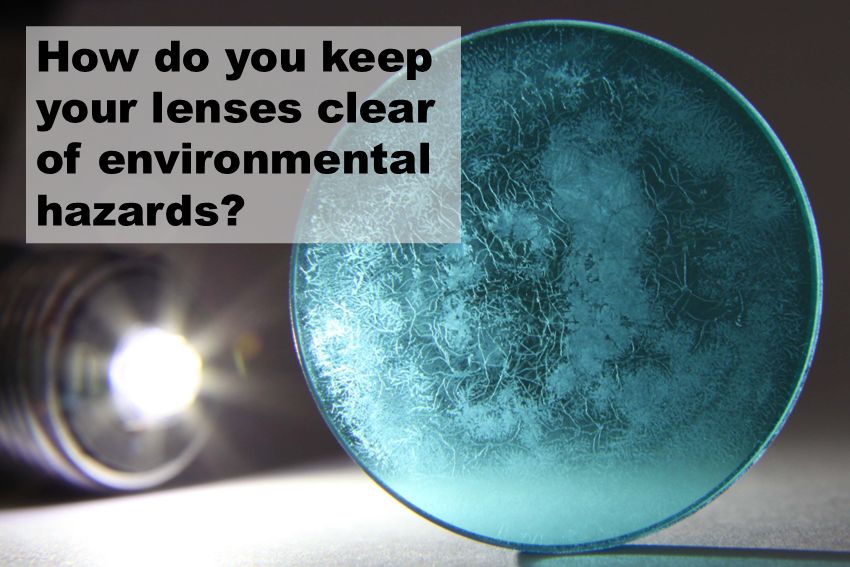In the world of optics, the performance and longevity of systems are often compromised by various environmental factors. Recently, I was taken aback by a photograph, which vividly illustrated the extent of fungus damage on a glass filter. This incident served as a stark reminder of the vulnerabilities that optical equipment faces, not only from biological threats like fungus but also from a range of environmental challenges. Understanding these issues is crucial for anyone involved in the design, maintenance, or use of optical systems.
In this post, we will explore the multifaceted threats to optical integrity, including fungal growth, coating degradation, lens staining, and the impacts of temperature and humidity. By gaining insights into these challenges, we can implement effective strategies to protect our optical investments and ensure optimal performance in diverse conditions.
Fungal Growth: A Significant Threat
Fungus thrives in warm and humid conditions, making it a significant threat to optical surfaces. This was a real issue during World War II when soldiers found their field glasses rendered useless due to fungus feasting on the optical cement. To avoid this fate, it is crucial to keep your optics dry and either sealed or well-ventilated. Aim for humidity levels below 60%—your lenses will thank you!
Tips to Prevent Fungal Growth:
- Store in a Dry Environment: Use silica gel packs in storage cases to absorb moisture.
- Regular Cleaning: Clean your lenses with appropriate solutions to remove any spores that may have settled.
- Use Anti-Fungal Coatings: Consider lenses that come with anti-fungal treatments to provide an additional layer of protection.
Coating Drift: A Subtle Compromise
Over time, interference coatings on optical elements can drift due to hydration and environmental exposure. This drift can lead to significant degradation in optical performance, making it essential to protect those critical interference filters from humidity. To ensure your instruments stay sharp and clear, look for coatings with low hygroscopic properties and a haze percentage of less than 1%.
How to Maintain Coating Integrity:
- Choose Quality Coatings: Invest in high-quality optical coatings that are specifically designed to resist environmental factors.
- Monitor Environmental Conditions: Keep an eye on humidity and temperature levels in your storage and operational environments.
- Regular Inspections: Periodically check your filters for any signs of coating degradation.
Lens Staining: Understanding Material Properties
Not all optical glass is created equal. While quartz and crown glass are relatively stain-resistant, flints and filter glass can develop a troublesome opaque surface layer over time. Always check the stain resistance ratings of your catalog glasses to keep your optics pristine.
Best Practices for Glass Maintenance:
- Understand Your Materials: Familiarize yourself with the properties of the glass types you are using.
- Use Protective Cases: Store your lenses in protective cases to minimize exposure to dust and contaminants.
- Gentle Cleaning Techniques: Use microfiber cloths and appropriate cleaning solutions to avoid scratching the surface.
Temperature and Humidity Effects: Assessing Impact
When designing complex optical systems, it is vital to consider how temperature and humidity can affect alignment. Look for materials with a low Coefficient of Thermal Expansion (CTE) around 10^{-6} / °C to reduce alignment issues. A change of less than 0.1% in humidity sensitivity is preferable.
Strategies for Managing Temperature and Humidity:
- Use Temperature-Controlled Environments: If possible, operate your optical systems in climate-controlled areas.
- Select Appropriate Materials: Choose materials that are less sensitive to temperature and humidity changes.
- Regular Calibration: Perform regular calibrations to ensure that your optical systems remain aligned and functional.
Conclusion
By keeping these insights in mind, you can ensure your optical systems perform exceptionally, regardless of the conditions. Let us prioritize the maintenance of our optical equipment to safeguard its functionality and longevity.
Feature photo: Specimens of Lens Fungus by Richard J Kinch
For further information or if you have any questions, please do not hesitate to contact me.



